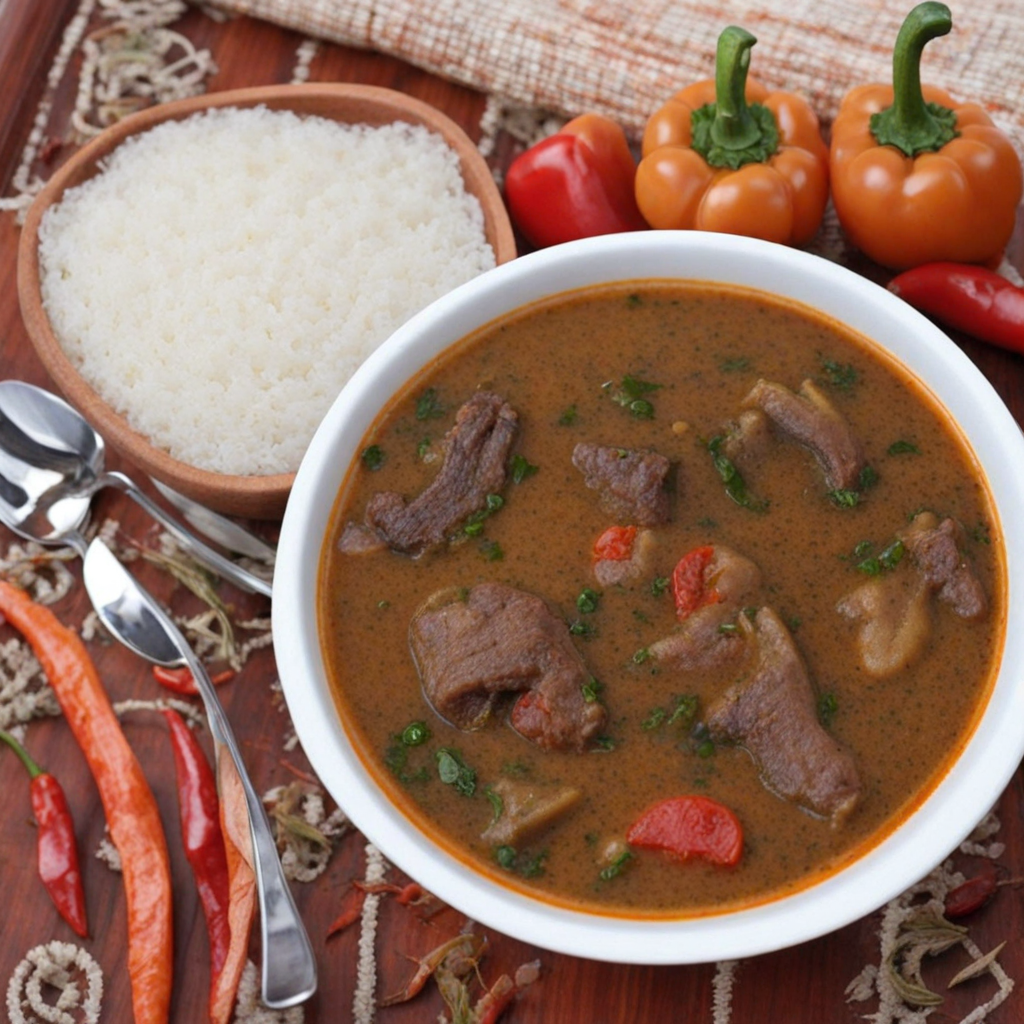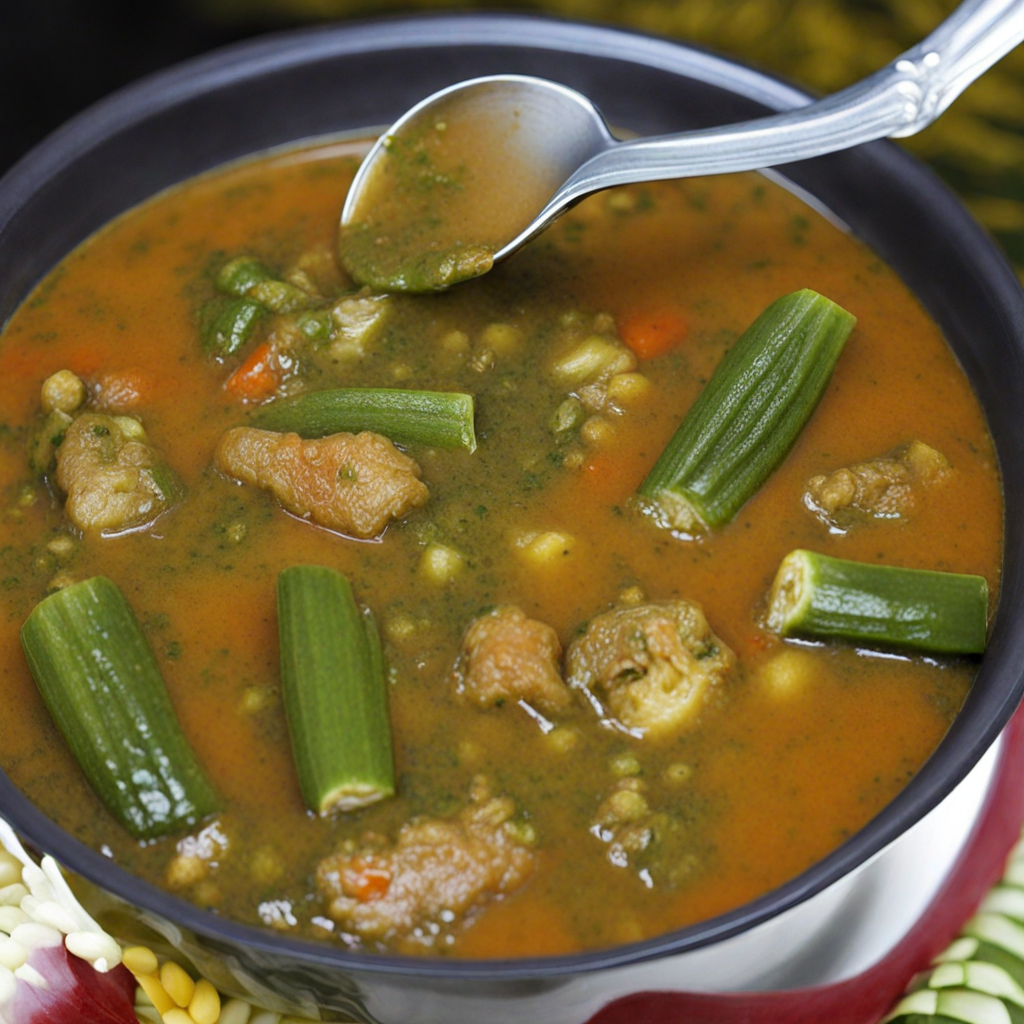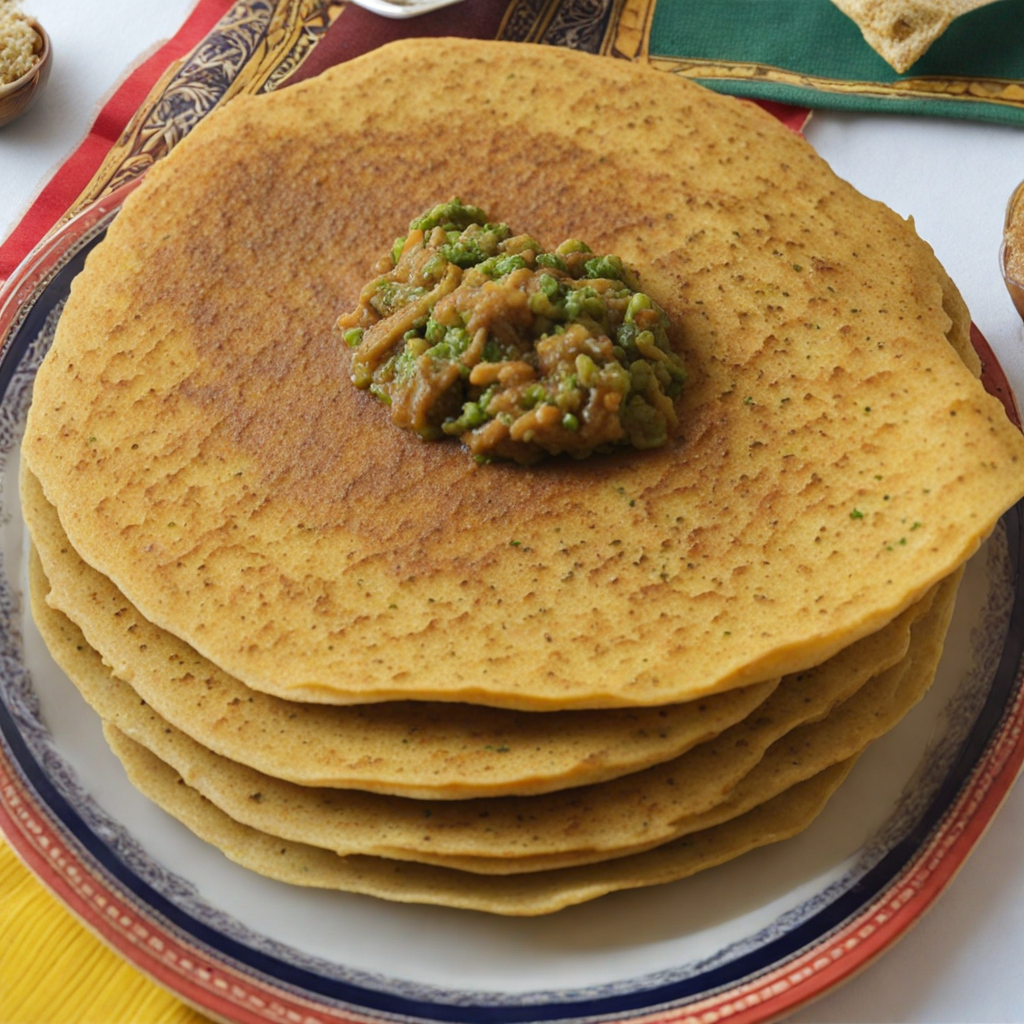Pepper Soup
Pepper Soup is a vibrant and aromatic dish that hails from Guinea, renowned for its bold flavors and invigorating spices. This traditional soup is typically made with a rich, flavorful broth that serves as a base for an array of ingredients, including tender pieces of meat or fish, which are often marinated to enhance their taste. The use of fresh herbs and spices such as pepper, ginger, and garlic infuses the soup with a warming heat that tantalizes the palate and invites you to indulge in its comforting essence. The hallmark of Pepper Soup lies in its unique blend of seasonings, which can vary from one recipe to another, showcasing the cook's personal touch. The soup is often garnished with chopped green onions or cilantro, adding a splash of color and freshness that complements the deep, savory notes of the broth. The resulting dish is not only a feast for the senses but also a staple in gatherings and celebrations, where it is shared and enjoyed among family and friends, fostering a sense of community. This dish is versatile, as it can be tailored to accommodate various dietary preferences, with options for both meat lovers and vegetarians alike. The warmth of Pepper Soup makes it an ideal choice for cooler weather, while its bold flavors are sure to awaken your taste buds any time of the year. Whether served as an appetizer or a main course, discovering Pepper Soup from Guinea is a culinary adventure that promises to excite and satisfy your cravings for something truly unique.
How It Became This Dish
The History of Soupe de Poivre: A Culinary Gem from Guinea #### Origins Soupe de Poivre, or Pepper Soup, is a beloved dish that reflects the vibrant culinary heritage of Guinea, a country located on the western coast of Africa. This spicy, aromatic soup has its roots deeply embedded in the agricultural practices and cultural traditions of the region. The dish is primarily made from a variety of ingredients, including meat (often chicken or fish), vegetables, and a distinctive blend of spices, with pepper being the key ingredient. The origins of Soupe de Poivre can be traced back to the indigenous communities of West Africa who utilized local resources to create nourishing meals. The use of pepper—whether black pepper, chili, or other local varieties—was a natural choice due to its availability and ability to enhance flavor. The soup's simplicity and adaptability made it a staple in many households, serving both as a source of sustenance and a means of celebrating communal gatherings. #### Cultural Significance In Guinea, food is more than mere sustenance; it is a vital part of social identity and cultural expression. Soupe de Poivre is often served during significant events such as weddings, communal feasts, and religious ceremonies. It transcends mere nourishment, symbolizing hospitality and the sharing of resources among family and friends. The preparation of Soupe de Poivre is often a communal affair. Families gather to cook together, passing down traditional recipes from one generation to the next. This practice not only strengthens familial bonds but also fosters a sense of community. The act of preparing and sharing food is imbued with cultural rituals, where the soup is served alongside rice or fufu, further emphasizing the importance of communal dining in Guinean culture. The dish also has historical significance, as it showcases the region's agricultural diversity. Guinea's fertile lands yield a variety of crops, from grains to vegetables, that are essential in crafting the soup. As trade routes expanded over centuries, the introduction of new spices and ingredients from neighboring regions added complexity and depth to the original recipe, evolving Soupe de Poivre into a dish that reflects both local and regional influences. #### Development Over Time The evolution of Soupe de Poivre can be divided into several phases, shaped by historical events, trade, and cultural exchanges. During the pre-colonial period, the dish was primarily prepared with locally sourced ingredients, emphasizing the use of traditional spices and cooking methods. The indigenous peoples of Guinea were skilled in the art of cooking, using techniques such as smoking, grilling, and slow simmering to develop rich flavors. With the arrival of European traders in the 15th century, the culinary landscape of Guinea began to transform. The influx of new spices and cooking techniques led to an adaptation of Soupe de Poivre, allowing it to incorporate flavors from beyond its borders. The Portuguese, for instance, introduced new varieties of chili peppers, which eventually became integral to the dish. This period marked the beginning of a culinary fusion that would continue to evolve over the centuries. Colonialism in the 19th and 20th centuries further impacted the development of Soupe de Poivre. As Guinea navigated the complexities of colonial rule, traditional foods became a means of preserving cultural identity. The soup was often prepared in homes as a way to assert cultural pride and resist colonial influences that sought to impose foreign culinary traditions. Post-independence, after Guinea gained its freedom in 1958, there was a renewed interest in celebrating national identity through cuisine. Chefs and home cooks began to explore the richness of Guinea’s culinary heritage, revitalizing traditional dishes like Soupe de Poivre. This revival was not just about food; it was a movement towards embracing and promoting Guinean culture on a global stage. In contemporary Guinea, Soupe de Poivre has further diversified. While traditional recipes remain popular, variations have emerged, reflecting the tastes and preferences of younger generations. Ingredients such as coconut milk, peanuts, and seasonal vegetables are often incorporated, adding new layers of flavor while maintaining the essence of the original dish. As globalization continues to influence culinary practices, Soupe de Poivre is now enjoyed in various forms, making its way into restaurants and homes around the world. #### Conclusion Soupe de Poivre is more than just a dish; it is a reflection of Guinea's rich agricultural heritage, cultural identity, and historical evolution. From its humble beginnings rooted in local ingredients to its status as a symbol of hospitality and communal ties, the soup embodies the spirit of Guinean culture. As the world becomes increasingly interconnected, Soupe de Poivre serves as a reminder of the importance of preserving culinary traditions while embracing innovation. Today, it stands as a testament to the resilience of a culture that cherishes its heritage, celebrating the flavors and stories that have been passed down through generations. In every bowl of Soupe de Poivre, one can taste the history, the community, and the pride of Guinea—a dish that not only nourishes the body but also feeds the soul. Whether enjoyed at a family gathering or a festive celebration, the soup remains a cherished culinary gem that continues to evolve, captivating food lovers both within and beyond Guinea.
You may like
Discover local flavors from Guinea







